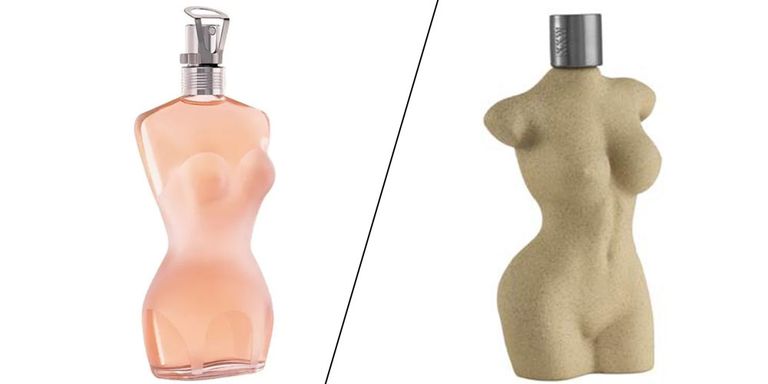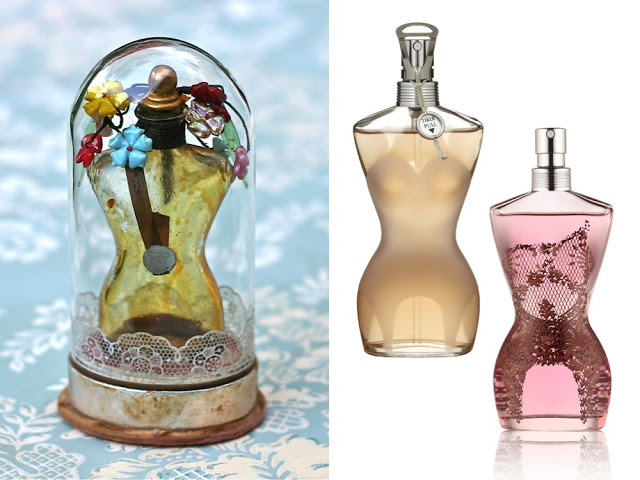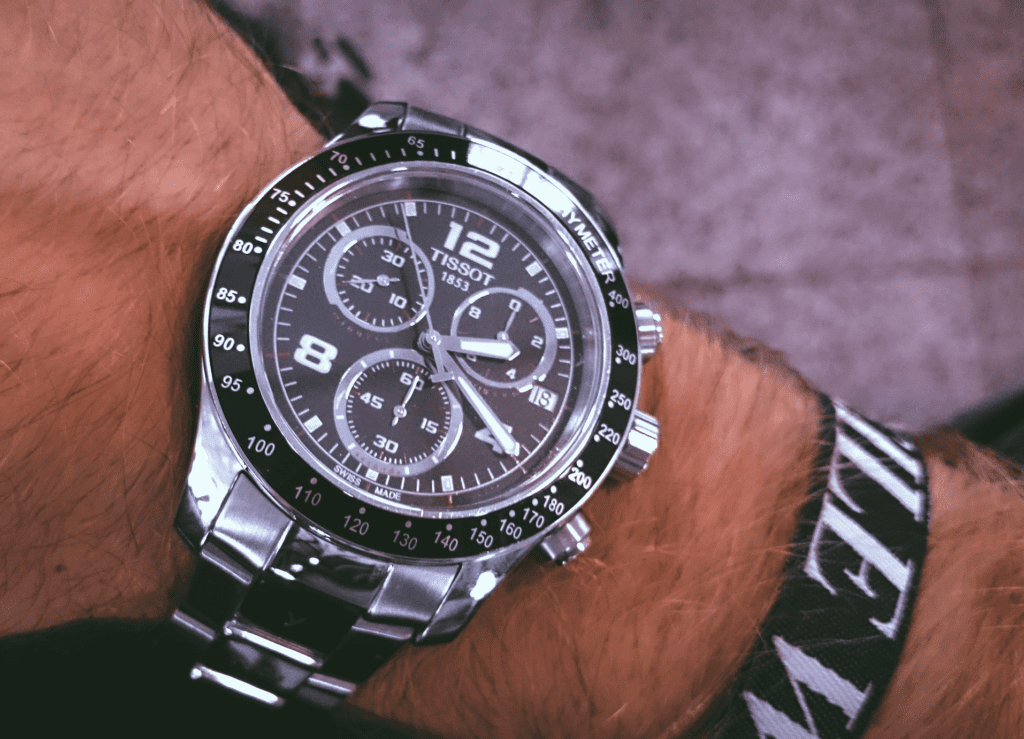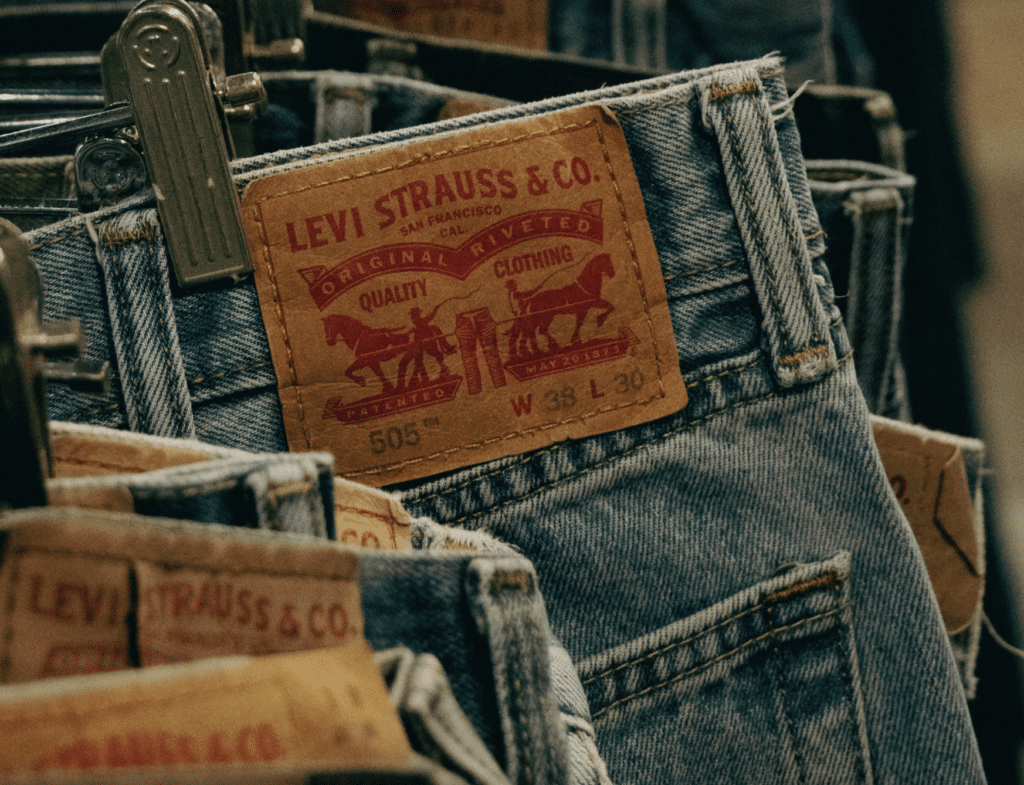
image: Cosmo
Designer Jean-Paul Gaultier took to his brand’s Instagram account this week to shed light on the visual similarity between his classic body-shaped fragrance bottles and the newly-revealed fragrance, KKW Body by Kim Kardashian (above, right). The famed couturier seemed to suggest that the reality star-turned-budding consumer goods mogul was inspired by his own 25-year old fragrance range. Kardashian responded to the mounting drama, telling Cosmo, “Sculptures were my inspiration … I wanted [mine] to be really personal with my exact mold, but I’ve always loved the Jean Paul-Gaultier bottles.”
The legally-minded amongst us may have written off this “copying” call out rather quickly (as just one of a trend of countless (and often, meritless) cries infringement) because there are arguably some shaky legal grounds at play here.
A copyright infringement claim, for instance, can almost automatically be ruled out. The two bottles are not only not “substantially similar” (the standard for copyright infringement), based at least in part on the marked differences in the two bottles, such as Kardashian’s addition of shoulders, the belly button detail, the truly nude body, as opposed to Gaultier’s seemingly undergarment-covered bust, etc.
The real kicker here, in a copyright sense, is that the majority of the similarity that the two bottles do share stems from the fact that they both center on the same idea: A body-shaped fragrance bottle. Since ideas are not protected by copyright law (only the original expression of those ideas are protected), Gaultier would be out of luck should he try to pursue a copyright infringement claim.
For conversation’s sake, the French designer would possibly have more luck should he opt to rely on a trade dress infringement claim. For the uninitiated, trade dress is a type of trademark law that extends to the design and shape of a product. So, for instance, the shape of a perfume bottle, such as Dior’s J’Adore bottle, which enjoys federally registered trade dress protection in the U.S. and on an international scale.
The issue in terms of claiming this type of protection is that the visual impression, such as the design of the perfume bottle, must have “secondary meaning” in the minds of consumers, i.e., it must be capable of serving as an indicator of source in order to be protected. In plain English: The appearance of the bottle, itself, must be recognizable to consumers as originating from a specific source in much the same way a swoosh indicates the Nike brand to consumers or the Toile Monogram serves as an immediate identifier of the Louis Vuitton brand in the minds of most consumers.
In this case, the appearance of the body-shaped bottle would have to conjure up the Jean-Paul Gaultier brand.
Courts have wrangled with what exactly it takes for a brand to show that its design is capable of serving as an indicator of source. The Second Circuit Court of Appeals stated in 2008 that “secondary meaning” may be established through a combination of the following six factors: (1) advertising expenditures, (2) consumer studies linking the mark to a source, (3) unsolicited media coverage of the product, (4) sales success, (5) attempts to plagiarize the mark, and (6) length and exclusivity of the mark’s use.
Given that Gaultier’s “Classique” fragrance and the men’s version, “Le Male,” have been widely available for sale since the early 1990’s, subject to extensive advertising by the brand, written about by the fashion media, etc., one could potentially argue that the “Classique” fragrance bottle meets at least a handful of the six factors above, and as a result, is protectable by trade dress.

Elsa Schiaparelli *left) & Jean-Paul Gaultier (right)
But even if the bottle is protectable trade dress, Gaultier would not be victorious just yet. There is an additional step. The brand would then have to prove that Kardashian’s Body bottle is infringing that trade dress. This would be proven by a showing that consumers are likely to see Kardashian’s Body fragrance and think that because of the shape of the bottle that it is is connected with another brand in some way, potentially by way of a collaboration. (As the “anonymous source doctrine” in trademark law established, when consumers recognize that a trademark or trade dress represents a single source, they need not know the specific origin of the good at issue).
Given the sheer level of Kardashian’s fame on a truly global scale, it might be difficult for people to not know that fragrance pictured above (on the right) is hers and that it is distinct from Gaultier’s existing scents. That is, however, up for debate, as is the level of originality of Gaultier’s because do remember, after all, that Elsa Schiaparelli released a fragrance called shocking, in 1937, the bottle for which was inspired by a model of Mae West’s body.











